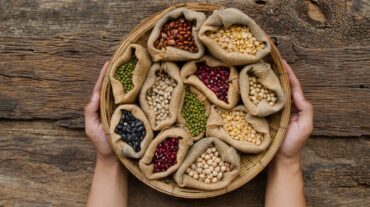A nutrient-rich diet is essential for a healthy body. Most foods contain specific nutrients. There are some foods that contain many different nutrients. In addition to plant foods There are also some animal foods that contain high amounts of nutrients. In addition to physical health, it also strengthens mental health. (nutrient dense food)
What are nutrient-dense foods?
Nutrient dense or nutrient rich foods are rich in vitamins, minerals and other micro and macro nutrients. They also contain saturated fat, sugar and sodium, among other things. Examples might be fruits, vegetables, whole grains, fat-free and low-fat dairy products, fish and seafood, unprocessed meats and skinless poultry. Nuts and Nuts under this
Here are 5 foods that are considered nutrient-dense (5 Nutrient-dense foods)
1 nut
Nuts are very nutritious. The proportion of monounsaturated fats in these is high. These sources of healthy fats are essential for many bodily functions. Helps in cell growth and protects organs. They have a different composition compared to saturated fat and trans fat, which are unhealthy fats. Beans also have a high protein content. There are also many other nutrients such as fiber, vitamin E, vitamin K, folate, thiamine, etc.
They also contain magnesium, potassium, carotenoids, antioxidants, phytosterols, almonds, pistachios and unsalted walnuts are beneficial. Nuts can also be used as a topping on salads and vegetables or as a snack between meals.
2 sweet potatoes
Sweet potatoes are an excellent source of energy and nutrients. These contain a lot of complex carbohydrates. These types of carbohydrates take longer to break down than simple carbohydrates. It contains processed sugar. Sweet potatoes contain many other nutrients, such as vitamins A, B-6, and C. They also contain antioxidants like beta-carotene. Antioxidants may reduce the risk of chronic conditions such as cancer.
Sweet potatoes can be eaten as a side dish or as a main course. Boiling and frying is good for health. It is best to boil sweet potatoes to reduce blood sugar levels.

3 salmon
Salmon is an oily fish that has many health benefits. The proteins contained in it act as a source of energy. Supports a variety of bodily functions such as building and repairing cells and tissues of the body. Salmon also contains omega-3 fatty acids, another essential nutrient. Omega-3 fatty acids may reduce the risk of heart disease. Salmon is also a good source of the minerals magnesium, potassium, and selenium. Rich in vitamins B-12 and D. Smoked salmon is good for your health. Can be eaten as a topping on salad pieces.
4 legumes
Legumes, or legumes, are a food group that includes beans, peas, lentils, soybeans, and peanuts. These foods are high in fiber. It is essential for digestive health. These are one of the best plant-based protein sources. Legumes are complex carbohydrates that can provide the body with long-lasting energy. It also has a low glycemic index and blood sugar content. Because of this, it can help prevent or control blood sugar levels.
Rich in minerals
Legumes also contain B vitamins. Antioxidants and many minerals such as iron, calcium, and magnesium. Nuts contain phytates, lectins, and other antioxidants. This affects the body’s ability to absorb nutrients. It is good for health to soak and pressure cook to reduce the antioxidant content.

Kale
Kale is a highly nutritious, leafy green vegetable that belongs to the cruciferous family. Contains dietary fiber, protein, and many types of antioxidants. Including beta-carotene This vegetable also contains large amounts of vitamins A, C, and K. Vitamin K is essential for bone and tissue health. It helps support other physiological processes such as blood clotting. It’s less common than vitamins A and C, but occurs naturally in kale and other green leafy vegetables. Kale can be a great addition to salads or smoothies. Can also be eaten grilled.
Read more:- Cashew Nut Day: Cashew nuts are an antidepressant you can make yourself. Know how it works for brain health.
